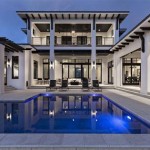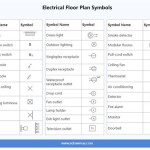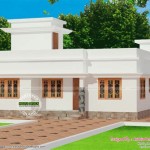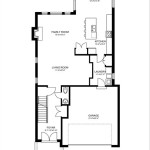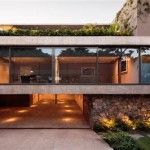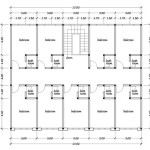The Importance of a 3D Plan in House Design
A 3D plan, or a three-dimensional representation of a house design, is an essential tool for homeowners and architects alike. It offers a comprehensive and immersive visualization of the proposed structure, allowing stakeholders to understand the space, layout, and aesthetics before construction begins. This detailed visual representation goes beyond traditional blueprints and provides a more accurate and intuitive understanding of the final product.
Enhanced Visualization and Understanding
One of the primary benefits of a 3D plan is its ability to enhance visualization and understanding. Unlike two-dimensional blueprints, which can be difficult to interpret, 3D plans present a realistic and interactive view of the house. This allows homeowners to easily comprehend the flow of the space, the relationship between rooms, and the overall design concept. The ability to walk through the virtual house and explore different perspectives provides a much deeper and more informed understanding of the proposed design.
Early Identification of Design Flaws
The immersive nature of 3D plans enables early identification of design flaws and potential issues. By visualizing the space in three dimensions, homeowners and architects can identify potential bottlenecks, awkward layouts, or aesthetic inconsistencies before construction commences. This proactive approach allows for timely adjustments and revisions, minimizing the risk of costly mistakes and rework during the construction phase.
For example, a 3D plan can reveal that a proposed staircase is too steep or that a kitchen island obstructs natural light. By identifying these issues early on, the design can be modified to address them efficiently and improve the overall livability and functionality of the house.
Effective Communication and Collaboration
Effective communication and collaboration are crucial in the house design process. 3D plans facilitate this collaboration by providing a common visual language for all stakeholders. Homeowners can easily share their vision with architects and contractors, ensuring everyone is on the same page regarding the design intent. The ability to visualize and discuss the design in a shared environment promotes understanding and minimizes misunderstandings, resulting in a smoother and more efficient design process.
Types of 3D Plans
There are various types of 3D plans commonly used in house design. Some of the most popular options include:
- Floor Plans: These plans depict the layout of each floor, showing the location of rooms, doors, windows, and other structural elements.
- Exterior Views: These views showcase the overall appearance of the house from different angles, providing a sense of the architectural style and landscaping.
- Interior Views: These plans offer a detailed look inside the house, showcasing furniture placement, decor, and lighting fixtures.
- Virtual Reality (VR) Tours: Advanced 3D plans can be integrated with VR technology, enabling homeowners to virtually walk through their future home and experience it firsthand.
Creating a 3D Plan
Creating a 3D plan typically involves the following steps:
- Data Gathering: The architect or designer gathers information about the client's needs, preferences, site conditions, and budget.
- Software Selection: Suitable 3D modeling software is chosen based on the project's requirements and the designer's expertise.
- Model Creation: The architect builds a virtual model of the house using the gathered information and the chosen software.
- Rendering and Presentation: The model is rendered to create realistic images and animations that can be presented to the client.
Benefits of Using a 3D Plan
Using a 3D plan for house design offers numerous benefits, including:
- Reduced Costs: Identifying design flaws early on minimizes costly mistakes and rework during construction.
- Improved Functionality: Virtual walkthroughs help ensure the house is designed for optimal functionality and flow.
- Enhanced Aestheic Appeal: 3D plans enable homeowners to visualize the final design and make informed decisions about aesthetics.
- Streamlined Communication: Shared visual representation facilitates clear communication between all stakeholders.
- Increased Client Satisfaction: Seeing the design come to life in 3D increases client confidence and satisfaction.

How Much Do 3d House Plans Cost Faqs Answered Cedreo

3d Floor Plans

How Do You Make A 3d Floor Plan

Make 3d House Plans And Rendering

Sweet Home 3d Draw Floor Plans And Arrange Furniture Freely

Benefits Of Using 3d House Floor Plan Design

1000 3d Floor Plans And Home Design Ideas To Build Free Plan House Imagination Shaper

3d Floor Plans Easily Communicate Your Vision Cedreo

3d Floor Plans

3d Floor Plan Design Simple House Plans

